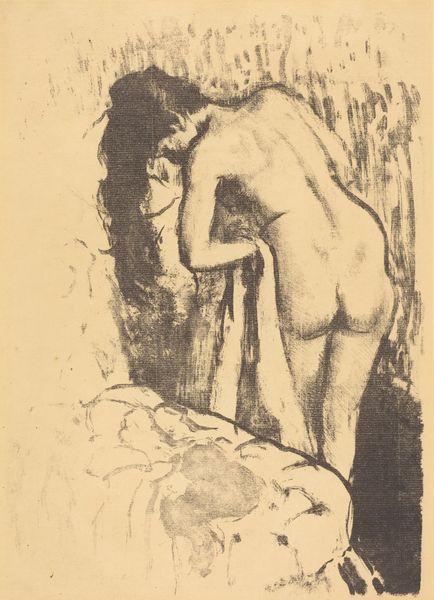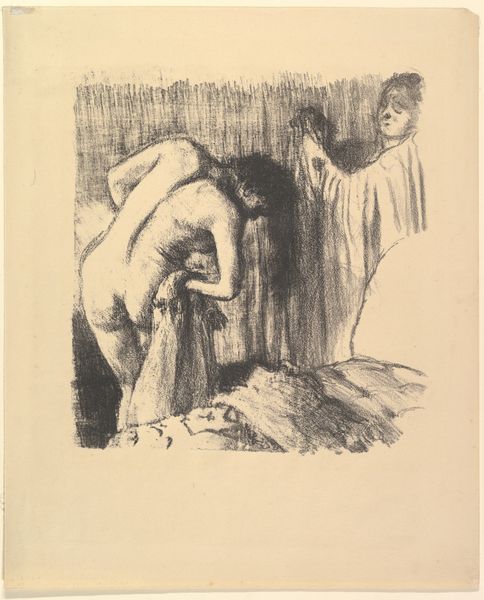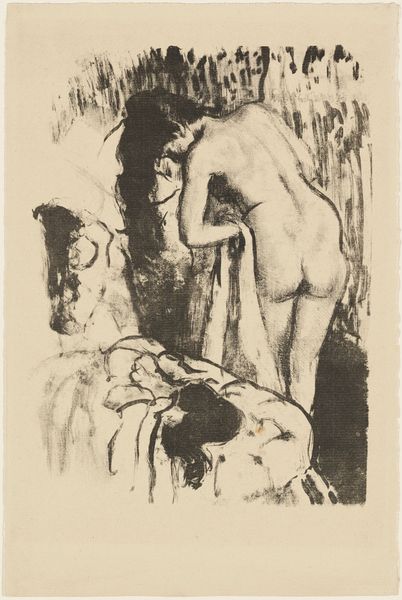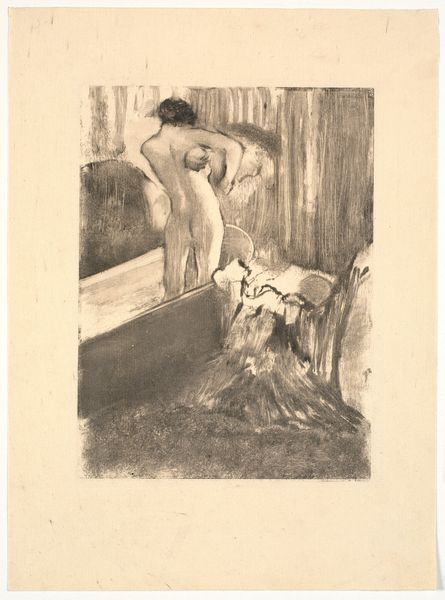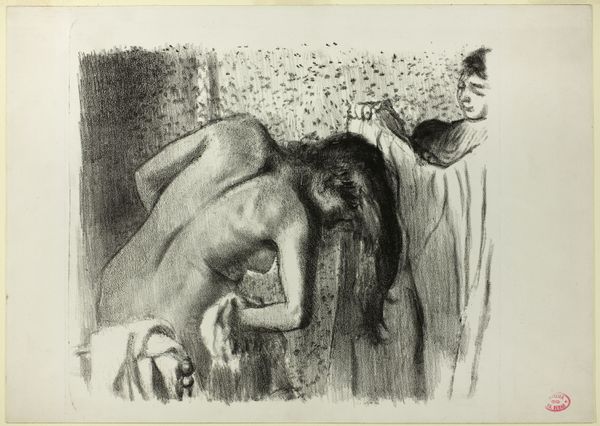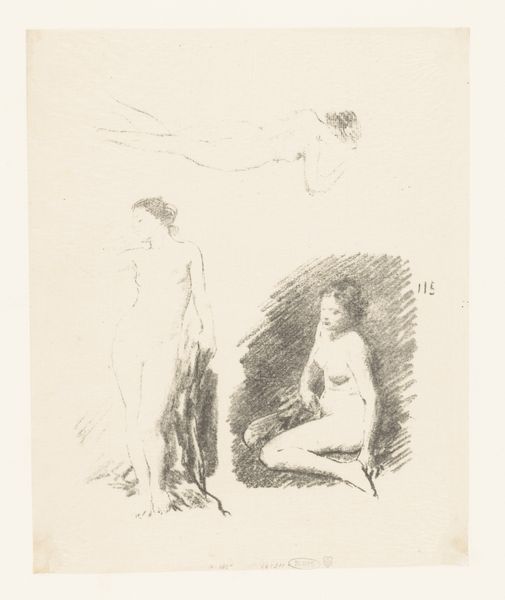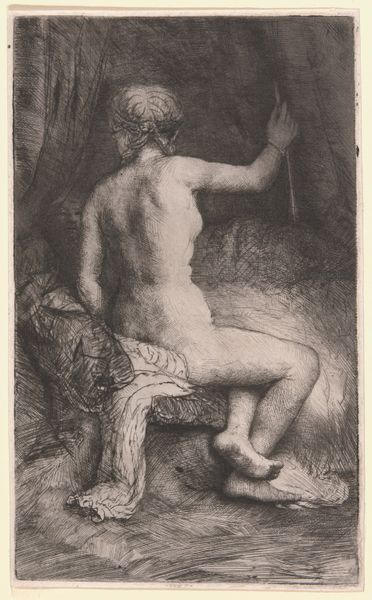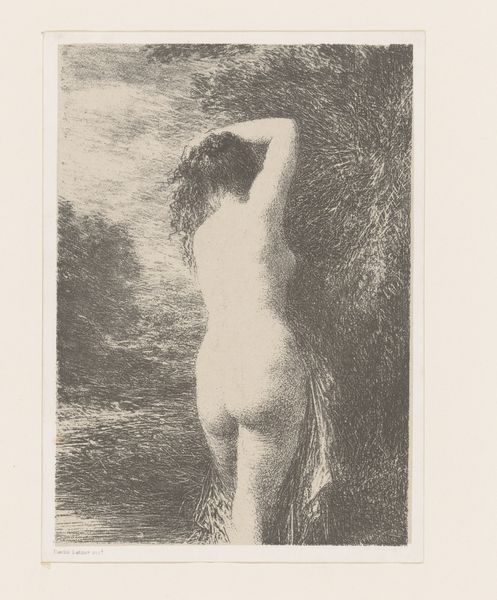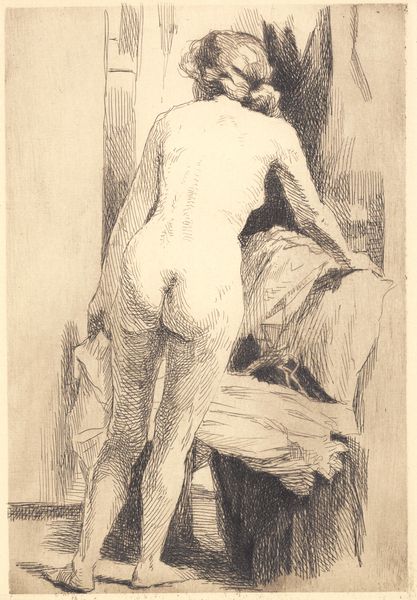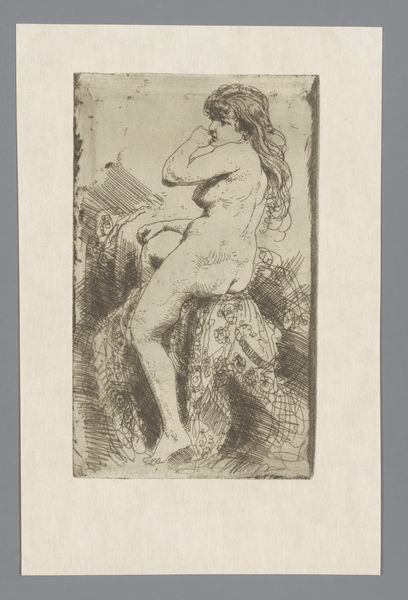
drawing, lithograph, print, pencil
#
portrait
#
drawing
#
lithograph
# print
#
impressionism
#
figuration
#
pencil drawing
#
intimism
#
pencil
#
portrait drawing
#
nude
Dimensions: 443 mm (height) x 303 mm (width) (bladmaal), 350 mm (height) x 259 mm (width) (Plademål)
Edgar Degas made this print, *Femme nue debout à sa toilette*, using lithography, a printing technique in which the artist draws on a flat stone or metal plate with a greasy crayon, then applies ink to the treated surface. The lithographic process lends itself to capturing the immediacy and spontaneity of a drawing. Look closely, and you'll see the dense, almost velvety blacks achieved through the rich application of ink, as well as the more delicate, sketch-like lines that define the figure's form. Degas wasn't afraid to leave traces of the working process visible, adding to the sense of intimacy. Lithography, developed in the late 18th century, democratized printmaking, making it more accessible to artists and allowing for larger editions. In this way, Degas was part of a shift that blurred the lines between high art and the graphic arts, engaging with a process that had roots in commercial printing while using it to create something deeply personal. This reminds us that the value and meaning of art lies not only in its subject matter but also in the materials, and making, that bring it into being.
Comments
No comments
Be the first to comment and join the conversation on the ultimate creative platform.
